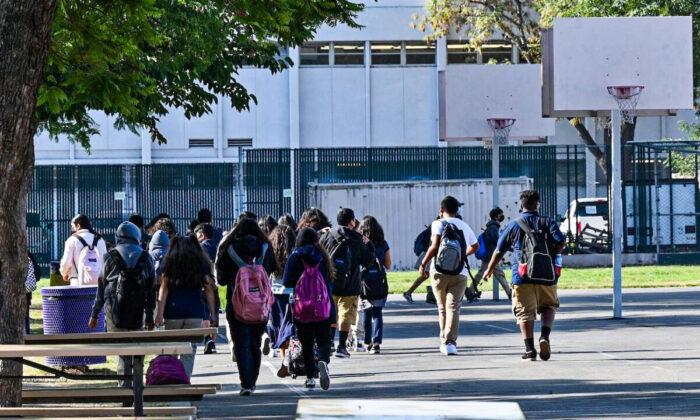Seventy percent of public schools have seen a rise in students seeking help with their mental health since the beginning of the COVID-19 pandemic, a new U.S. government study says.
The study, based on data collected between April 12 and April 26, 2022, from a total of 830 schools participating in an NCES research program, also finds that 88 percent of respondents did not strongly agree that they could effectively provide mental-health services to students in need, largely because they didn’t have the manpower and money to handle the issue.
The study does not, however, identify any prevalent causes of the rise in mental health problems among public school students, such as prolonged school closures, abrupt switch to remote learning, and public health restrictions that limited physical activity and social interaction.
The largest public school systems in the nation have experienced some of the longest lockdowns. In New York City, nearly 1.1 million students were sent home in March 2020 when then-New York Gov. Andrew Cuomo put the state on what he called a “pause.” It wasn’t until 18 months later when the Big Apple’s schools were able to reopen, as the city’s 190,000-strong teachers union continued to pressure city officials to delay the return of in-person learning.
The Los Angeles Unified School District also struggled to negotiate a reopening plan with its teachers’ union, which would go so far as to claim that there was “no such thing as learning loss” for hundreds of thousands of students who were forced into remote learning and that California’s plan to reward schools that reopen was “propagating structural racism.”
Upon analyzing data collected from January to June 2021 on the behaviors and experiences of 7,705 high school students across the nation, CDC researchers found that about 44 percent of them had “persistent feelings of sadness or hopelessness” almost every day for two weeks or more in a row, to the point that they stopped doing their usual activities.
In addition, nearly 20 percent of students had “seriously considered attempting suicide,” and 9 percent had attempted suicide. The prevalence of having serious suicidal thoughts and attempts was higher among female students than male students, and was higher among white students than black or Asian students, according to the paper.
The CDC researchers also noted that high schoolers relying on a computer or a phone for social interaction were more likely to feel suicidal than than those who physically engaged with other people.
“The same pattern was observed among students who were virtually connected to others during the pandemic (i.e., with family, friends, or other groups by using a computer, telephone, or other device) versus those who were not,” the paper stated. “Comprehensive strategies that improve feelings of connectedness with others in the family, in the community, and at school might foster improved mental health among youths during and after the COVID-19 pandemic.”





